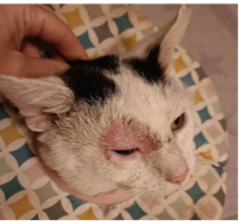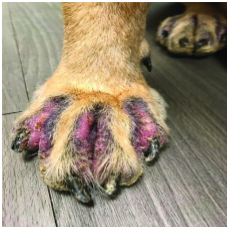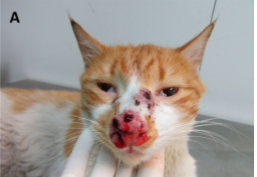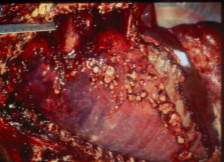Mycology
1/36
There's no tags or description
Looks like no tags are added yet.
Name | Mastery | Learn | Test | Matching | Spaced |
|---|
No study sessions yet.
37 Terms
what is mycology?
study of fungi
where is fungi found?
environment - decaying vegetation, moldy hay
skin and mucous membranes - host adapted or contaminants from enrivonment
what are the major characteristics of fungi?
eukaryotes, majority saprophytes and non-pathogens
how do fungi reproduce?
asexually by fragmentation, budding and through spores; sexual reproduction is also seen
what do fungi cell membranes contain?
sterols (ergosterol)
true/false - fungi contain a cell wall
true; contains glucan, mannan, chitin
what are the unicellular forms of fungi called?
yeast
what are the multicellular fungi called?
mold
what does mold contain to spread?
hyphae and fruiting bodies which contain spores
what are a tangled group of hyphae called?
mycelium
what is the colonial morphology of yeast?
opaque, creamy, smooth
what is the microscopic morphology of yeast?
unicellular forms round single cells, budding
what is the colonial morphology of molds?
wooly-fluffy-powdery colonies, aerial growth
what is the microscopic morphology of molds?
hyphae
what is the colonial morphology of dimorphic fungi?
combination of yeast and mold depending on temperature
what is the microscopic morphology of dimorphic fungi?
yeast or hyphal, depending on temperature
what is used to differentiate between fungi organisms?
hyphae divided based on presence of septa
what is the general pathogenesis of fungal infections?
fungus invade tissue and induce pathogenic effect; environment/opportunistic organisms infect mainly immunocompromised hosts; fungal infection results in induce chronic granulomatous infection; infections uncommon, but serious; limited antimicrobial agents
what is mycotoxicosis?
fungal contamination or growth on food material leads accumulation of toxins and when consumed induce severe disease
how does fungi impact allergies?
inhaled fungal spores induce hypersensitivity and allergy

where is this fungal infection?
superficial - outermost layers of the skin and hair

where is the fungal infection?
cutaneous - extend deeper into the epidermis, invasive hair and nail

where is the fungal infection?
subcutaneous - dermis, SQ, muscle and fascia

where is the fungal infection?
systemic - primarily in lung, spreads to other organs
how are fungal infections diagnosed?
morphology recognition - cytology, histopathology, went mounts
detection of fungal components - Beta D-glucan assay
detection of host immune response - antibodies, agar gel, ELISA
culture and ID
PCR
what is the stain used on fresh tissue to detect fungi?
calcofluor stain - binds to chitin in cell wall; requires UV microscope
what are the 3 agars used to culture fungi?
sabouraud dextrose agar, sabouraud dextrose agar with cycloheximide, dermatophyte test media
what is used to definitive id fungi?
by DNA probes/sequencing, serotyping, mating studies, virulence testing
when are beta-d glucan assay performed?
general screening of invasive fungal disease
what species of fungi is diagnosed by latex agglutination test or lateral flow tests?
cryptococcus neoformans - in cats
what is a great tool used to detect antigen from fungal infection?
fungal serology-A
what are the 5 examples of antifungal drugs?
polyenes (amphotericin B, natamycin, nystatin)
flucytosine
azoles
allylamines
griseofulvin
how do polyenes, azoles, allylamines work?
inhibit ergosterol
how do flucytosines work?
inhibit nucleic acid synthesis
how do griseofulvin work?
binds to mitotic spindles, inhibits mitosis; administered orally, accumulates in skin
why are antibodies usually not protective in fungal infections?
immunity against fungal infections are usually cell-mediated; most lesions are granulomatous